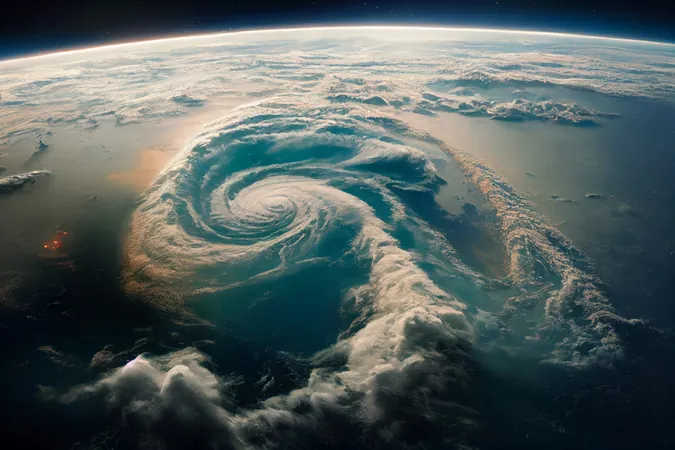
European Scientists Unveil Groundbreaking Quantum Space Sensor to Combat Climate Change!
2024-09-26
Introduction
In an exciting development for climate science, a consortium of European scientists has embarked on an ambitious project to create a revolutionary quantum space sensor aimed at enhancing environmental monitoring and tackling the escalating threats of climate change. This state-of-the-art sensor is designed to deliver precise atmospheric and ecological data, poised to significantly improve predictions related to climate patterns and natural disasters.
Technology Behind the Sensor
At the heart of this initiative is quantum technology, which allows for unprecedented accuracy in measurements. The newly developed sensor will meticulously track subtle changes in Earth's gravity field, enabling scientists to gather detailed information on glaciers, rising sea levels, and fluctuations in groundwater levels. This advanced approach not only promises better data but also a faster response to environmental changes that can impact communities globally.
CARIOQA Consortium
The CARIOQA consortium is spearheading this critical research, using advanced quantum accelerometers to improve gravity mapping—essentially creating a high-resolution gravitational map of the Earth. These quantum sensors will enable the study of various phenomena, such as the melting of polar ice and the depletion of groundwater supplies—both crucial elements in addressing climate change.
Project Overview
The exciting €17 million, EU-backed CARIOQA-PMP project aims to deploy the world’s first quantum accelerometer into orbit by 2030. By integrating groundbreaking quantum techniques, the initiative seeks to replace traditional gravimetric methods that often struggle to detect minute changes in Earth’s gravitational field, particularly those linked to climate change indicators.
Limitations of Traditional Methods
Christine Fallet, the project coordinator, explained the limitations of traditional gravimeters: "While they can detect major ocean currents, more subtle changes—like minor shifts from melting polar ice or groundwater depletion—often go unnoticed. Our goal with the CARIOQA project is to leverage quantum technology to provide enhanced satellite-based Earth monitoring."
Cold Atom Interferometry (CAI)
The sensor operates using a technology known as Cold Atom Interferometry (CAI), capitalizing on the innate wave-like behavior of atoms cooled to near absolute zero. This method enables scientists to create precise interference patterns that allow remarkable accuracy in gravity measurements. Fallet likened the leap from traditional methods to this new technology as upgrading from a blurry old TV to a crystal-clear HD screen, a transformation that will provide unprecedented insights into our planet's dynamics.
Collaborative Efforts
The CARIOQA initiative not only solidifies Europe's role in quantum technology leadership but also takes a significant step toward bolstering global climate change mitigation and adaptation strategies. By bringing together notable partners—such as the French Space Agency (CNES), the German Aerospace Center (DLR), Airbus Defence and Space, and renowned universities across Europe—this project stands as a beacon of collective effort in the fight against climate change.
Conclusion
As the world grapples with an increasingly unstable climate, the potential of CARIOQA's advancements resonates loudly: Europe is poised to lead the charge in using cutting-edge technology to understand and address one of the most pressing challenges of our time. What breakthroughs await as this pioneering project marches towards its 2030 launch? The future of climate monitoring may just have changed forever!


 Brasil (PT)
Brasil (PT)
 Canada (EN)
Canada (EN)
 Chile (ES)
Chile (ES)
 España (ES)
España (ES)
 France (FR)
France (FR)
 Hong Kong (EN)
Hong Kong (EN)
 Italia (IT)
Italia (IT)
 日本 (JA)
日本 (JA)
 Magyarország (HU)
Magyarország (HU)
 Norge (NO)
Norge (NO)
 Polska (PL)
Polska (PL)
 Schweiz (DE)
Schweiz (DE)
 Singapore (EN)
Singapore (EN)
 Sverige (SV)
Sverige (SV)
 Suomi (FI)
Suomi (FI)
 Türkiye (TR)
Türkiye (TR)